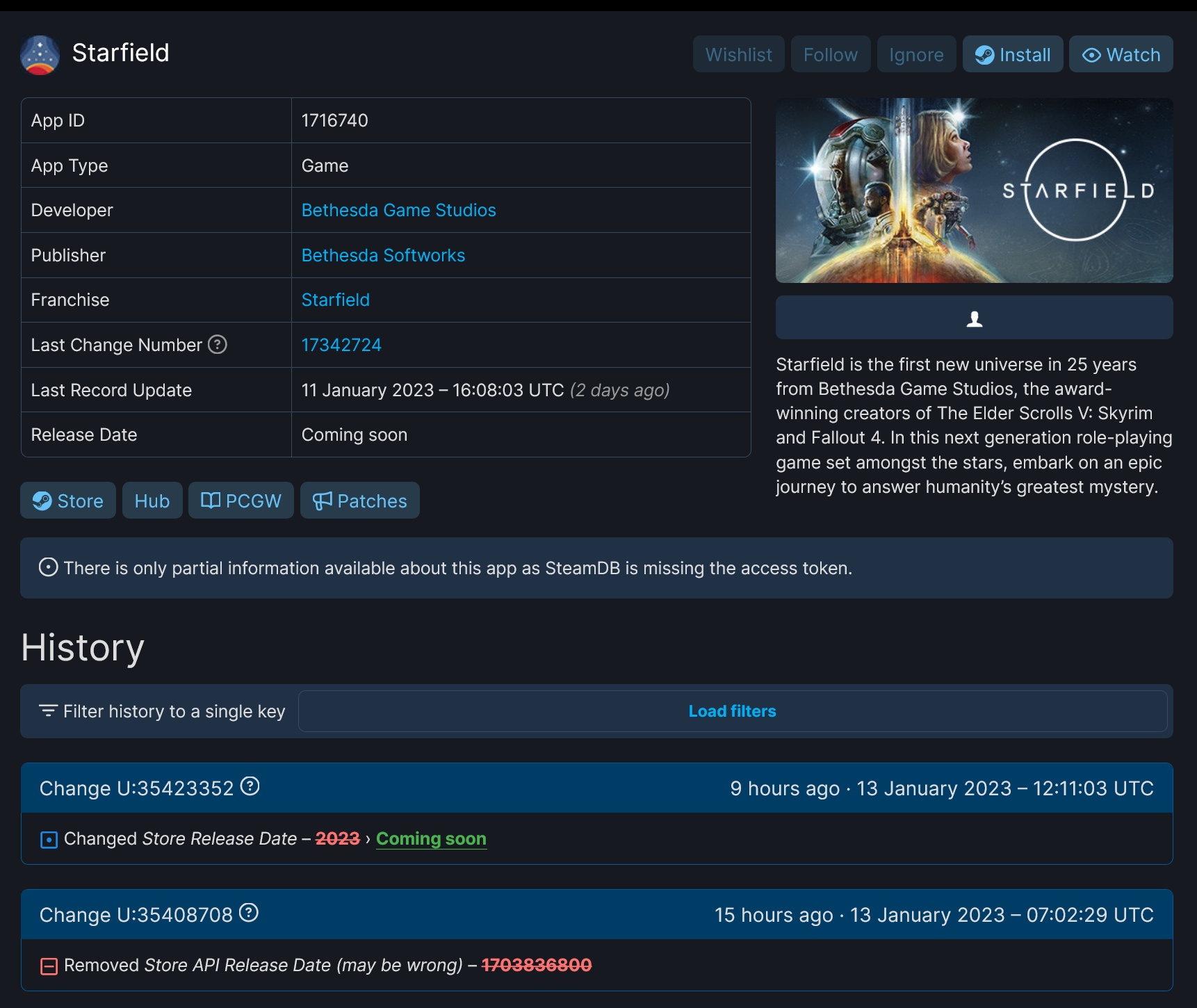You may have noticed recently that Starfield’s listed release date on Steam (opens in new tab) recently changed, from 2023—vague, but at least within a specific window—to “coming soon,” which is vague and utterly without specificity. It was in fact just one of several games to have their launch dates rejiggered today: Others, visible on SteamDB, include Forspoken (opens in new tab)Redfall (opens in new tab)Ark 2 (opens in new tab)and Robocop: Rogue City (opens in new tab).
The good news is that there is nothing to worry about. Well, probably nothing, anyway. You see, back in October 2022 (opens in new tab), Valve made a change to the way it handles release dates for upcoming games. Prior to that, release dates on Steam store pages were a Wild West: Some games would list an exact date, others would have something more ballpark—a month and year, maybe—and still others would drop in joke text, like “when it’s come.”
“Our current hodge-podge of coming soon displays leaves a lot to be desired,” Valve wrote at the time. “Some information can be missing or incomplete. Worst of all, the custom text field we used to provide has no localization support, which creates a confusing and inconsistent experience for players across the globe. One-off jokes or references don’t translate, and date descriptions vary from place to place.
“For instance, take the string 5/8/2023 …is that May 8th, or August 5th? It depends on what country you live in!”
To address those shortcomings, Valve introduced five options developers could select from and switch between, with a “localized and regionally-familiar presentation” for each:
- The exact date. “Aug 24, 2023”
- Month-and-year. “August 2023”
- The quarter of the calendar year. “Q3 2023”
- The year. “2023”
- No date at all. “Coming Soon”
To handle how those dates appear in lists of upcoming games, non-specific launch targets are listed at the last possible date in their time range. So, for instance, if your game is slated for Q1 2023, it will be sorted as though the release date is March 31; if it’s simply 2023, Steam will treat it as though the release date is December 31. Essentially, it’s an automated placeholder date. And if there’s no date at all, it’ll appear after all other games that do have a specific date or launch target.

The current expectation is that Starfield will be out sometime in the first half of the year, but since the date on Steam was listed as 2023, it would be treated as though the launch date was December 31. It’s reasonable to think that Bethesda would not want that, but it also wouldn’t want to publish a date publicly too early—thus, the no-date option.
There is one other theory, although it’s a bit of a stretch: Valve warned in the October 2022 update that games with release dates that don’t fit the new standards will be automatically set to “coming soon” at 12 am PT on January 1 It’s possible that Bethesda blew past the deadline without doing anything, and then Valve didn’t actually take action to set the dates to “coming soon” because it wasn’t really paying attention either. Like I said, it’s a stretch, but Steam’s isn’t the only product page that developers have to manage for their games.
Whatever the case may be here, other games have previously made similar changes, presumably to accommodate Steam’s new release date policy: Nightingale (opens in new tab), for instance, switched its listed launch target from “Coming in first half 2023—Add to your wishlist!” to “Coming soon” on December 8. I’ve reached out to Bethesda and Steam to ask about the changes, and will update if I receive a reply.